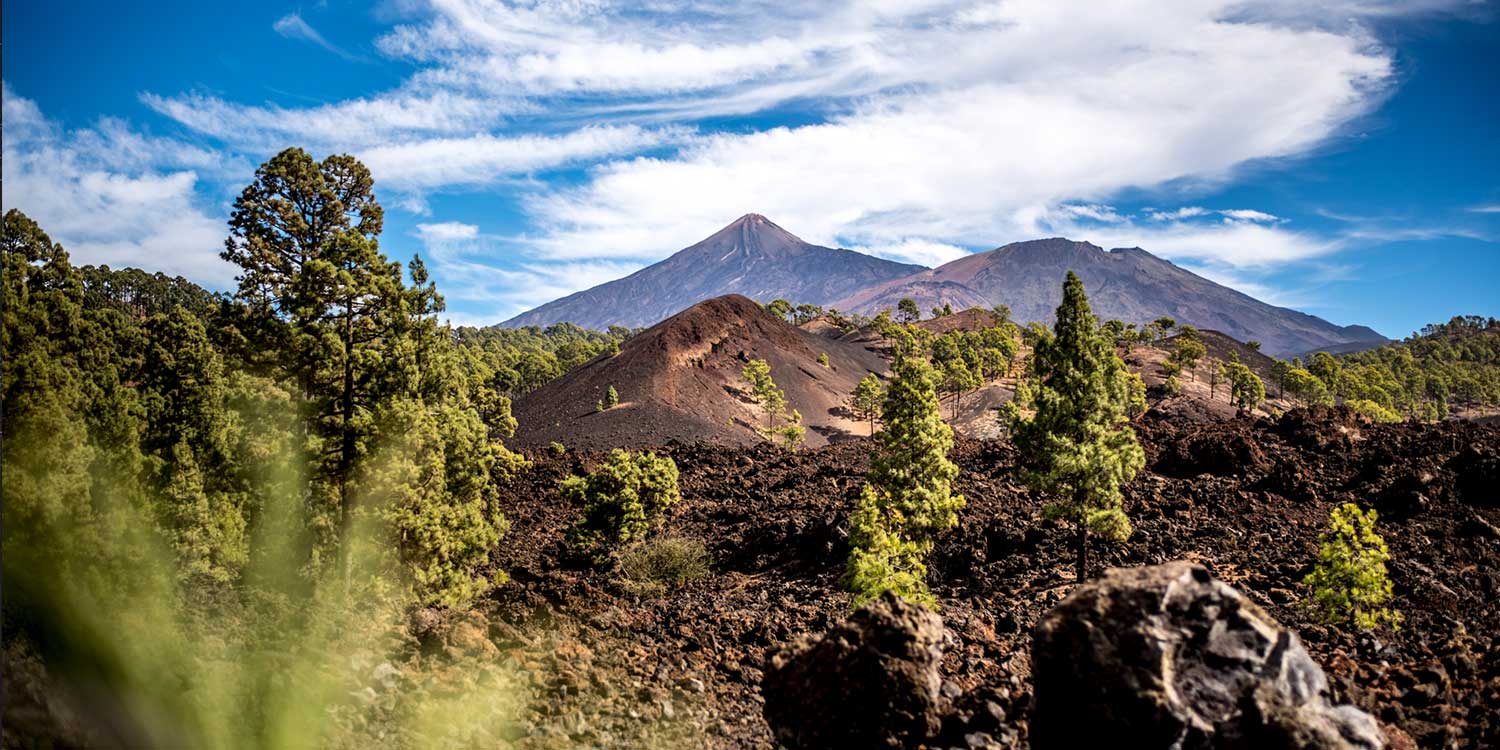
The island of Tenerife can boast a number of places and sights that you can not see during a single visit.in a single capture ·. It is therefore worth a vacation in both the south and the north to avoid a long car journey.
Here is a short list of some of the mosts exciting and interesting.
- The visitors Centre at the El Portillo museum which presents a film presentation about the origins of the Canary Islands.
- The visitor Center "Canada Blanca" in one the wings of the National Parador hotel provides detailed information brochures.
- Masca Village and Masca Gorge: a trip to Masca should not be missed. The old idyllic village in the middle of a mountain. Teno massiv is an ideal destination: the environment simply invites one to wander in the quaint pubs and sample the delicious goat cheese and local wine. Women sell handmade hats and baskets.
- San Cristobal de La Laguna: The university town and World Heritage Site. The old Spanish colonial city was founded in 1494 and is one of the most interesting places in Tenerife. In the church of Nuestra Senora de la Concepcion, the first Guanches were baptized.
- The island's capital Santa Cruz de Tenerife: approximately 200,000 inhabitants. The port with its 2km long quay, imports goods mostly from Spain. In the centre are the Plaza Espana and Plaza de la Candelaria. Here is where the pedestrian zone begins. The Parque Cesar Manrique Marittimo is a large recreational area for city dwellers.
- In the modern concert hall in the Auditorium, internationally renowned musicians perform concerts all year round.
- The Archaeological Museum: Museo de la Naturaleza y el Hombre is located at Calle Fuente Morales and documents the life of the Guanches.
- February sees the spectacular Santa Cruz Carnival. Truly a memorable and spectacular event.
- Puerto de La Cruz: The pretty little town in the Spanish colonial style is located on the north coast and offers many attractions: the Indian Baroque churches.
- The beach Playa Jardin with many exotic plants. The Jardin Botanico is somewhere you should definitely pay a visit. To visit Loro parque you should put aside plenty of time. The parrots and dolphin shows are enjoyed especially by the younger visitors. The Lago Martianez is a large, beautifully designed water park. The old center with its many shops and restaurants are a pleasure to stroll through.
- Pyramids of Guimar has a museum with interesting documents by the anthropologist Thor Heyerdahl, who investigated the mystery: Why did the Guanches mummify their dead and what prompted the building of the pyramids?
- Icod de los Vinos with its 1000 year old dragon tree. The historic old town is known for its good wine which is produced there. In many wineries you can try it for free. The old buildings and churches are particularly charming. A visit to La Cueva del Viento, a volcanic tunnel, is of great interest.
- Orotava Valley: In the famous old town many houses with the typical Canarian balconies can still be seen, fashioned from pine wood. During the festival of Corpo Dominus, large flower carpets are designed in the streets.
- Garachico: The once-thriving port city was destroyed by the eruption of the Arenas Negras 1706. It was later rebuilt and has now regained its former importance as before. Many of the old houses and buldings are preserved. On the coast, natural swimming pools are made ??of black lava, used by tourists and locals alike.
- El Medano: The small cosmopolitan coastal town, in the south of Tenerife, lies on a long natural sandy beach, which has become the wind and kite-surfing paradise of Tenerife. Perfect wind conditions are almost always guaranteed. The areas of Montana Roja and the beach La Tejita are natural conservation areas.
- Santiago del Teide: The peaceful little mountain village is situated on a verdant plateau, where the main crop here is vines from which the wonderful local wine is produced. The town centre with the old church, town hall or Ayuntamiento (exihibitions here are always seeing) in the typical Spanish Colonial building. The Plaza boasts a bronze statue of a Guanche chief, styled with Canarian flair. In the picnic area "Zona Recreativa" the families meet for a barbecue. Be sure you visit the old farmhouse "El Senorio de la Valle", which houses an exhibition detailing the last volcanic eruption in 1909.
- Vilaflor: The charming mountain village lies at 1400m. Here also the Canary Holy Hermano Pedro was born. YOu can see today where a church was built over the birthpace of this saint. In the many small restaurants you can sample typical Canarian dishes. The excellent wines of this region are a must (Bodega Reveron). Just outside the town lies the old washer and the fresh water springs Fonteide, Teide Alto and the "Pino Gordo".
Different races from Europe and the Mediterranean reach the islands (theories without evidence). One of the tribes that inhabited Fork - Guanxer Fork, Tenerife and La Palma (allegedly the origin of the name Guanches).
1 AD
According to Pliny, the Roman historian, the expedition of King Jubal II of Mauritania landed on the islands of Palma and EI Hierro.
6th - 9 Century
Further immigration from Africa (Berber) on the eastern islands.
1312
Lancelloto Malocello lands, driven away by the wind, today known as the island of Lanzarote.
1340 - 1342
Portuguese, Spaniards and Genoese make forays to the Canaries, disguises as traders.
1342
Pope Clernens VI lays claim to the bishopric of El Teide.
1402
The Norman nobleman Jean de Bethencourt signs a peace pact with Lanzarote, Fuerteventura and Hierro.
1478
Pedro de Vera declares war on behalf of the Castilian crown, in order to defeat Gran Canarla.
1483
The conquest of Gran Canaria is obtained after long and bitter struggle.
1492
Columbus discovered America.
1493
Alonso Fernández de Lugo defeated La Palma.
1494
Alonso Fernández de Lugo landed on Tenerife, on May 31 he suffered his biggest defeat in the Battle of Matanza.
1495
Final victory of the Spaniards over Tenerife. On 25 December at La Victoria the entire archipelago is placed under the rulership of the Spanish crown.
Since 1500
Despite protest from the Catholic kings of Castille, slavery is practiced on the island.
1550
After sugar cane, Malvasia wine becomes one of the most important commodities.
1657
The English Admiral Blake tried in vain with 36 ships to conquer Santa Cruz.
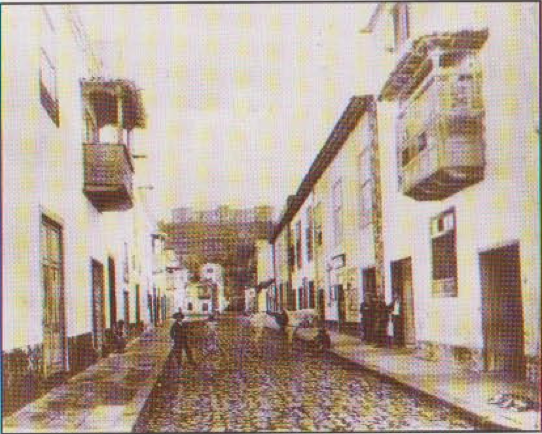
The first hotel in Tenerife, the Taoro above Puerto de la Cruz - Now Casino (1900)
1706
A renewed attempt by Admiral Jennings on behalf of the British monarchy fails.
1778
Santa Cruz de Tenerife · Spanish port receives only one privilege to be allowed to trade with America.
1797
Admiral Nelson loses his right arm (and the battle) after an unsuccessful attack on Santa Cruz.
1805
Nelson's victory at Trafalgar finishes Spanish naval power.
1821-1824
The Spanish colonies of Mexico, Peru and Venezuela received their independence.
1822
Santa Cruz de Tenerife is the capital of the entire archipelago.
1872
End of the wine business, the export-oriented banana production is becoming a major economic factor. Santa Cruz is a free port.
1880
In Puerto de la Cruz tourism begins. Ten years later, the Grand Hotel opened in Taoro
The first hotel in Tenerife, the Taoro above Puerto de la Cruz - Now Casino (1900)
1898
Spain lost its last colonies of Cuba, Puerto Rico and the Philippines (Spanish-American War).
1936
Generalísimo Franco gathered his followers to Tenerife and plans of the military coup there, the stage for the civil war.
Excerpt from the book
Dumont travel pocket book
Places of interest: The island capital of San Sebastian de la Gomera, Valle Gran Rey, Playa de Santiago, Valle Hermoso, Hermigua and Agulo, the rock formation Roque de Agando; the emblem of Gomera. El Cedro National Park. Park Museum Juego de Bolas. The ancient tradition of communicating by whistling over long distances: "El Silbo" and the rod jump: "El salto del pastor" have been preserved until today in the population. The pottery from El Cercado typically Canarian.
Specialties: Palm honey; "Miel de Palma" ', goat cheese, honey-rum or "Ron Miel ". Conejo en salmorejo or pickled rabbit.
Hiking on La Gomera is divided into hikes in Laurisilva = laurel forests, where there is a plenty of nice shade, and in rocky canyons with hiking trails. Again, as on all the Canary islands, the north and south differs widely in both climate and vegetation.
OUR HIKINGWEEK - PROGRAMM:
1. Day: Arrival by ferryboat or airplane from Tenerife to La Gomera
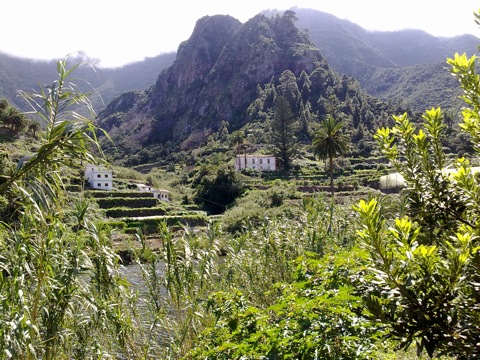 2. Day: Valle Gran Rey - El Cercado:We walk from the Church of Los Reyes (60) as far as La Matanza (900m) and on to El Cercado where we can taste the wonderful wine bar Mary, goat cheese and other delicacies. Then we go to Las Haya, where we stay overnight in a small pension to 1022 meters. (medium: 5 hours, 800 m +)
2. Day: Valle Gran Rey - El Cercado:We walk from the Church of Los Reyes (60) as far as La Matanza (900m) and on to El Cercado where we can taste the wonderful wine bar Mary, goat cheese and other delicacies. Then we go to Las Haya, where we stay overnight in a small pension to 1022 meters. (medium: 5 hours, 800 m +) 3. Day: Free day for beach and dolfinwatching (facultativ)
4. Day: Valle Hermosa – Las Hayas: From the romantic reservoir Encantadora (186 m) we walk through rural countryside making our way to Los Loros Duch where the bush rises higher and higher around us. Finally we reach the laurel forest and the mountain road. In the beautiful national parks of laurel forests, we finally arrive to Las Hayas 1043 m, where we enjoy ourselves in Amparo. (moderate, 4-5 hours)
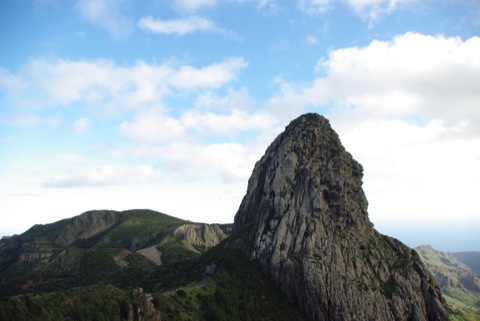 5. Day: El Cercado – Alto de Garajonay 1460 m: Our trek passes through the famous laurel forest (National Park Garajonay) and ends on the highest point of the island: de Garajonay Alto. (moderate, 3-4 hours )
5. Day: El Cercado – Alto de Garajonay 1460 m: Our trek passes through the famous laurel forest (National Park Garajonay) and ends on the highest point of the island: de Garajonay Alto. (moderate, 3-4 hours ) 6. Day: Hermigua – Las Vistas in Garajonay - forest: We start at the Gofio mill in Hermigua and climb up a steep valley. Passing many terraces and places of cultural interest, we reach a lake with a high waterfall. After an exhausting climb, we arrive at the camp restaurant and Las Vistas (850m). Here we enjoy the traditional cuisine of Las Vistas which is also famous outside of La Gomera. (medium, 3 hours)
7. Day: Agulo (200m)– Tres Bolas – Agulo: The picturesque town of Agulo on the north coast is our starting point and the goal of our trek. We climb a narrow path carved into the rock up the rock wall. The view is breathtaking! After some effort we reach the lake and then the high plains of La Palmita. After another half hour we are in the park-museum at Juego de Bolas to 750m. After visiting the small botanical gardens and museum, we walk downhill to Agulo (medium, 4-5 hours, 450).
8. Day: Departure after breakfast we go to San Sebastian harbour and by ferryboat to Los Cristianos. Then we say good bye to this beautiful Islands!
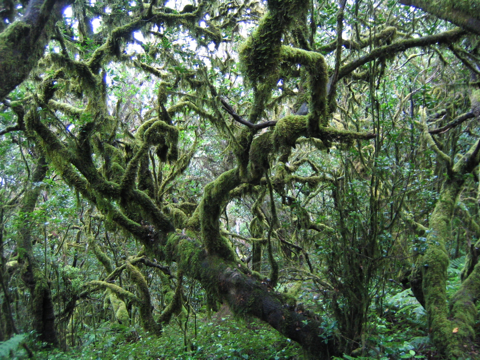
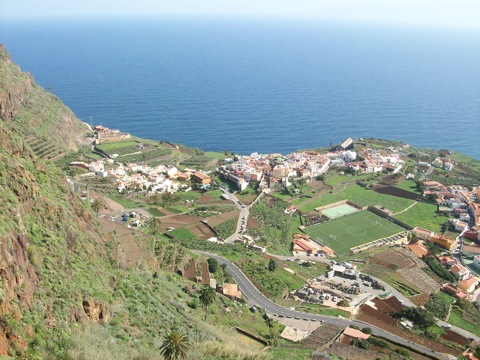




 +34 (0) 634 04 80 57
+34 (0) 634 04 80 57